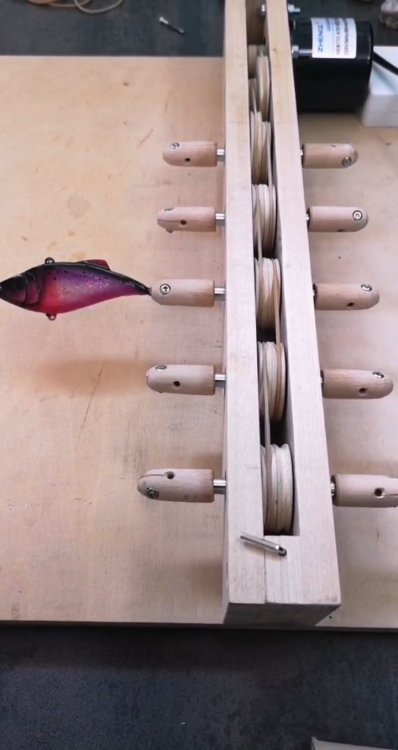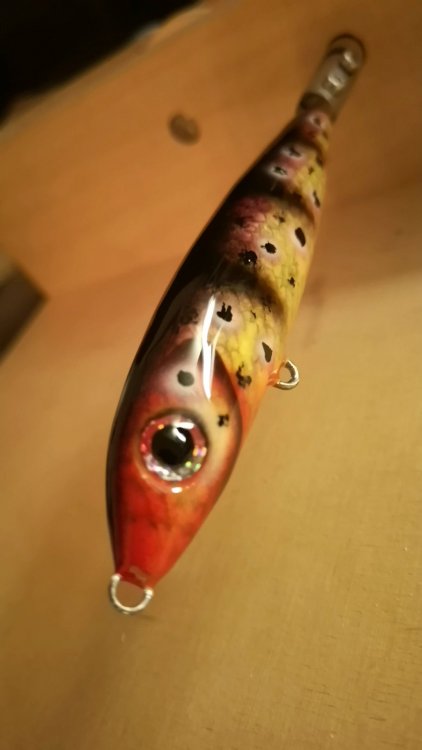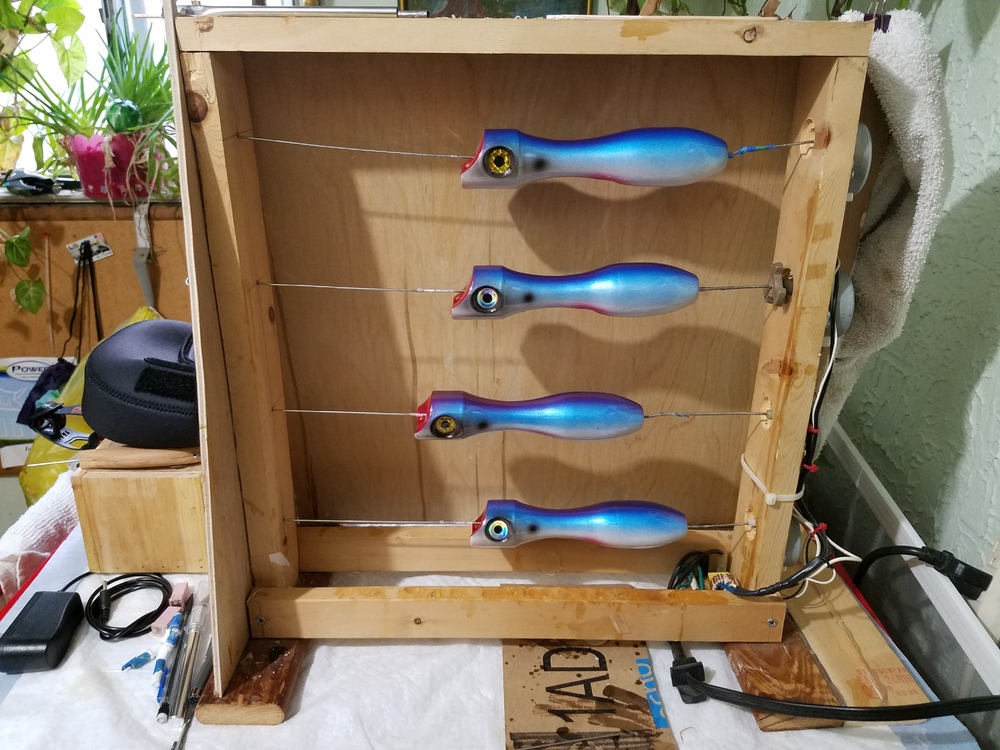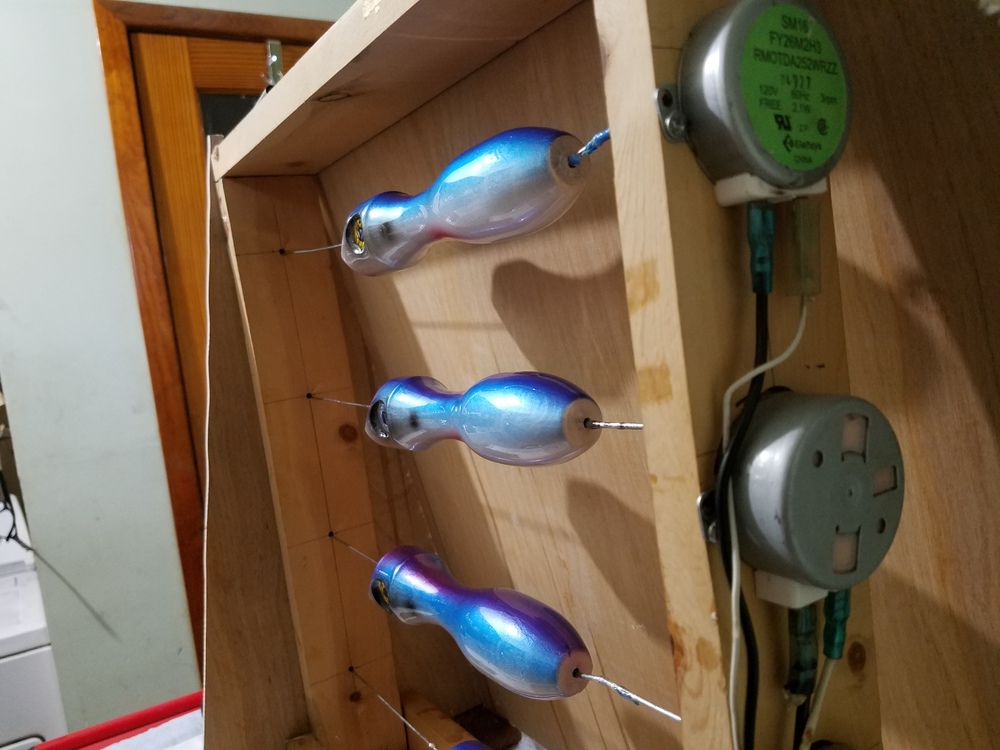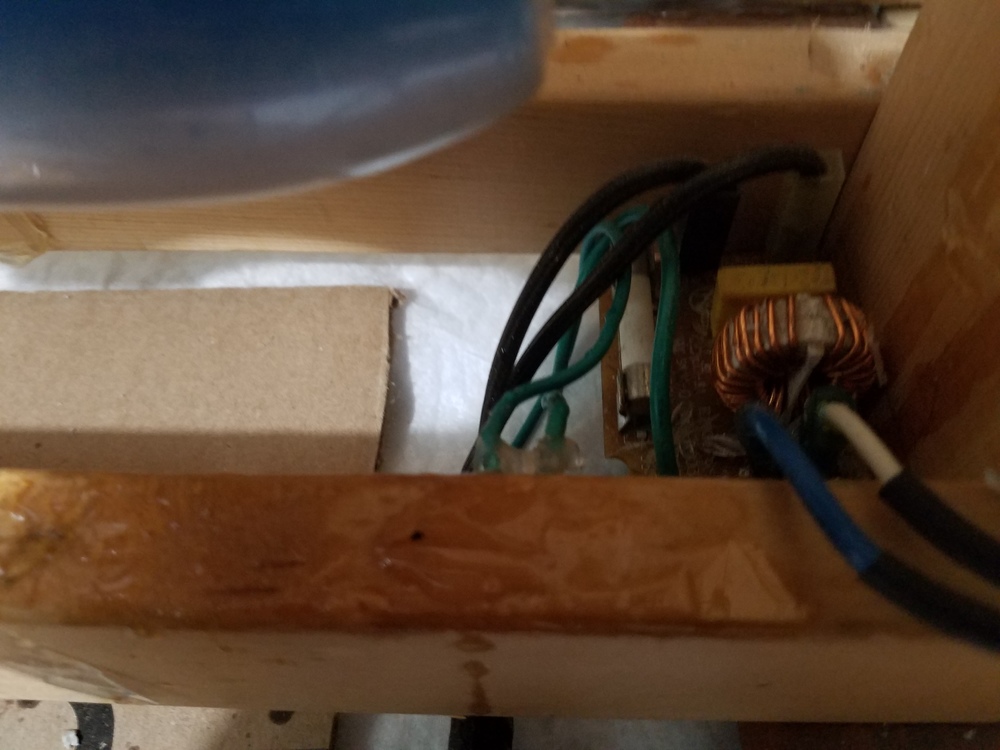Search the Community
Showing results for tags 'lure dryer'.
-
Hi everyone. This is my first post on this site and thought I'd show you my lure drying rack, in case someone is figuring out what kind of rack to build. This has an 220V motor with speed of 50r/min. Speed is reduced to 10r/min with two first pulleys, hence the difference is size. The clamps for the lures, wooden tips on the steel rods, are detachable. Clamps were originally made to the end of the steel rods (visible in the second pic), but this system where clamps are made from wood and are detachable, is way more handy. You can just pull it off, attatch to lure, coat the lure and jab it back on while other lures are rotting in rack. No need for high torgue motor either for this system as this rotates very freely. And lure size doesn't affect this pretty much at all because lures rotate through their longitudinal axis. The axles, made from steel rods or to be more precise, threadless shanks of long bolts where head and threads are cut off, are hanged by ball bearings, rotated via wooden pulleys, run by elastic rubber bands. Rack I had before this was with an discoball motor, the kind of drum model that many of the lure builders have. Very bulky and takes a lot of space. Motor broke and didn't want to make another one, desided that this is way more suitable for me as I can hang this on the wall and keep it rotating. Literally doesn't need space at all. I'll be happy to answer any questions someone might have, great to be on this site with fellow lure builders. Cheers, Jarmo from O'baits
-
My version of a lure spinner. I threw it together out of scrap. Four turn table motors from microwaves. It turns out there are DC and AC motors. To use the DC, you'd need a transformer-Home Depot sells one for door bells that has the right voltage. The little electronic gizmo at the bottom right is a board one of the motors was connected to in the oven, it has a fuse and I think some sort of transformer. Not all the ovens use this board, but all the AC motors can. These are torquey little motors-I keep them running for 2 days and nights while the Envirotex cures, and the motors don't even work hard. Most of them turn at about 3 rpm. The motors are hard to kill, so even a dead microwave will probably still have a working motor.
- 42 replies
-
- 2
-

-
- lure spinner
- lure rotisserie
-
(and 1 more)
Tagged with:


